Tim Sawyer - Chess Strategy Indian Defences: How to Beat Intermediate Chess Players (Sawyer Chess Strategy Book 15)
Here you can read online Tim Sawyer - Chess Strategy Indian Defences: How to Beat Intermediate Chess Players (Sawyer Chess Strategy Book 15) full text of the book (entire story) in english for free. Download pdf and epub, get meaning, cover and reviews about this ebook. year: 2022, genre: Home and family. Description of the work, (preface) as well as reviews are available. Best literature library LitArk.com created for fans of good reading and offers a wide selection of genres:
Romance novel
Science fiction
Adventure
Detective
Science
History
Home and family
Prose
Art
Politics
Computer
Non-fiction
Religion
Business
Children
Humor
Choose a favorite category and find really read worthwhile books. Enjoy immersion in the world of imagination, feel the emotions of the characters or learn something new for yourself, make an fascinating discovery.
- Book:Chess Strategy Indian Defences: How to Beat Intermediate Chess Players (Sawyer Chess Strategy Book 15)
- Author:
- Genre:
- Year:2022
- Rating:3 / 5
- Favourites:Add to favourites
- Your mark:
Chess Strategy Indian Defences: How to Beat Intermediate Chess Players (Sawyer Chess Strategy Book 15): summary, description and annotation
We offer to read an annotation, description, summary or preface (depends on what the author of the book "Chess Strategy Indian Defences: How to Beat Intermediate Chess Players (Sawyer Chess Strategy Book 15)" wrote himself). If you haven't found the necessary information about the book — write in the comments, we will try to find it.
Tim Sawyer illustrates chess strategy from games played vs random Advanced players as Guests on chess.com. The book has 31 games with 174 diagrams. Black wins 21 games and White wins the other 10. Tim mostly plays as Black in these 10-minute blitz games. Opening theory and endgame knowledge help your play, but tactics win most games.
The author uses strategy for many comments to explain whats going on. He follows any of these steps. 1. Describe the current position. 2. Imagine how to improve it. 3. Plan how to get there.
Tim picks a key position every few moves to make a comment. His plan is for you to browse through the book, look at the diagrams and read the comments with ease.
For those who prefer to read quickly, you can skim through the book from diagram to diagram. Note the change from the previous diagram and read any notes that interest you.
Sometimes a line of chess engine analysis is added. You may wish to work out those lines in your head, or just note that there was an alternative way to play and keep reading.
Tim Sawyer played chess for 50 years. As a Postal Chess Master, his usual opponents were rated 1800 to 2400. However, opponents in this book are often lower to intermediate. Tims peak Internet Chess Club blitz rating was 2492.
The author assumes that you can read algebraic chess notation. The diagrams have White at the bottom of the board. Thank you for reading. Enjoy this one!
Tim Sawyer: author's other books
Who wrote Chess Strategy Indian Defences: How to Beat Intermediate Chess Players (Sawyer Chess Strategy Book 15)? Find out the surname, the name of the author of the book and a list of all author's works by series.

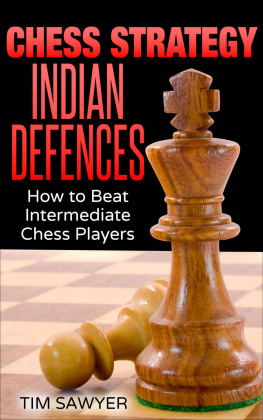
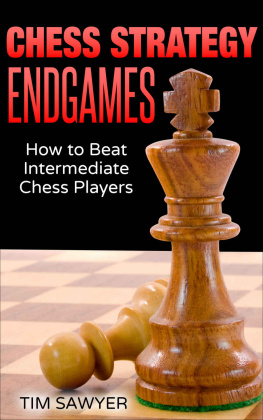
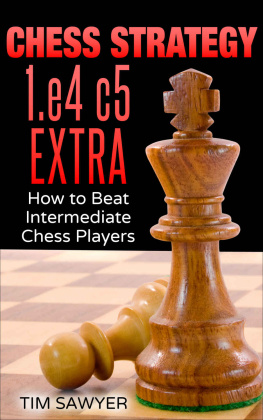

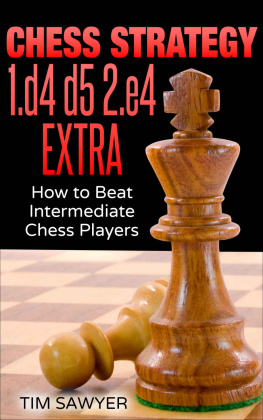
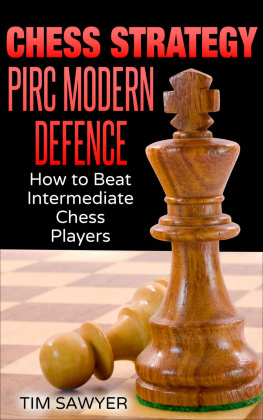
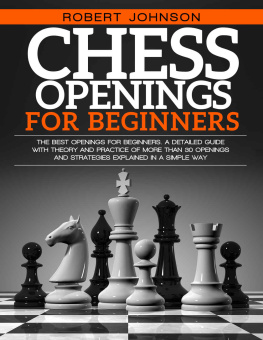
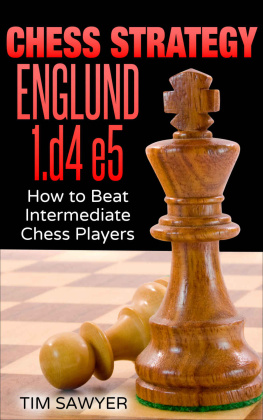

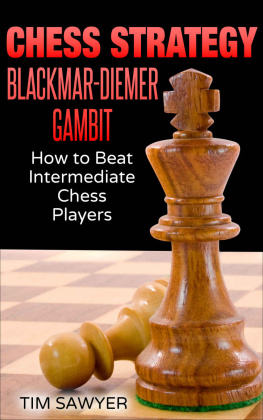

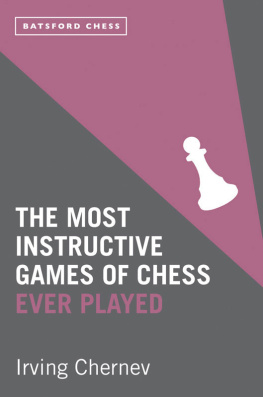
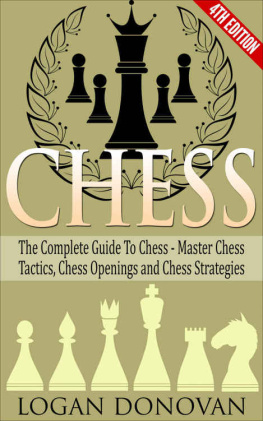
 This was the 14th time I have faced the Omega Gambit position. The other 13 followed 1.e4 Nf6 2.d4, all as Black. I won 12, drew one blitz game, and lost a one-minute bullet game on move 28. I always take the free pawn on e4. 8.Nf3 e4
This was the 14th time I have faced the Omega Gambit position. The other 13 followed 1.e4 Nf6 2.d4, all as Black. I won 12, drew one blitz game, and lost a one-minute bullet game on move 28. I always take the free pawn on e4. 8.Nf3 e4 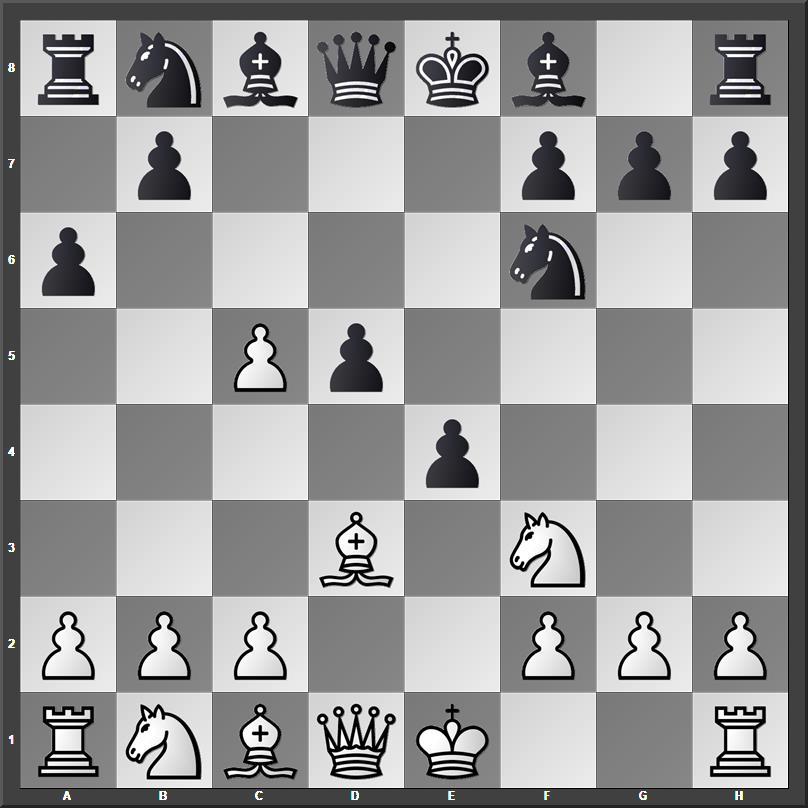 My opponent falls for a pawn fork. 8.Nf3 e4
My opponent falls for a pawn fork. 8.Nf3 e4 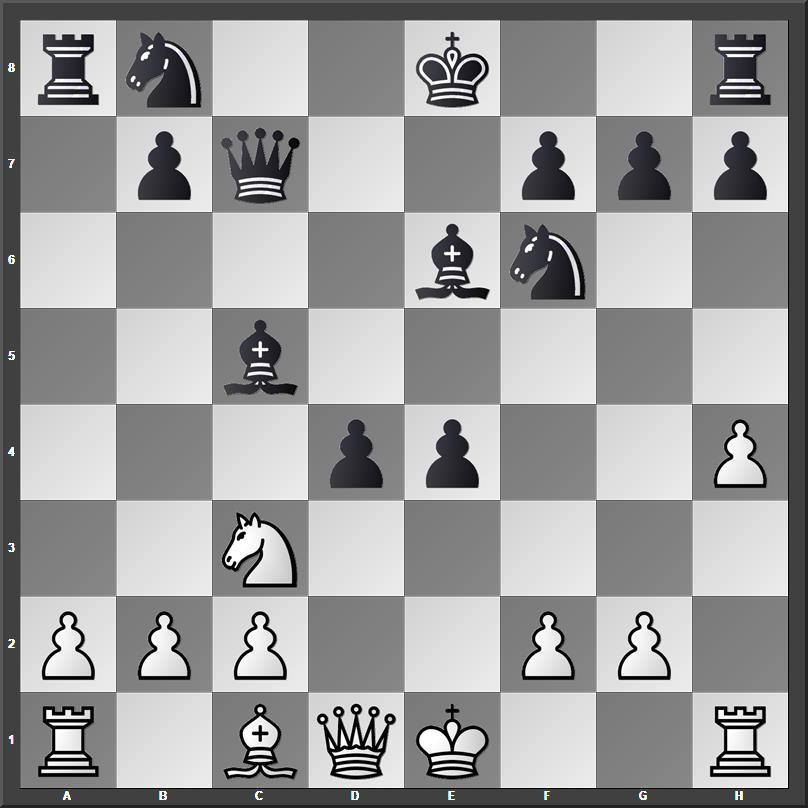 Or 15.Ne2 e3 and Black is winning. My opponent plays on so my strategy is to press the attack for toward checkmate. 15.Nb5 Qa5+ 16.b4 Qxb4+ 17.c3 Qxb5 18.Bf4 00 19.Rb1 Qc4 20.Rb4 Bxb4 21.cxb4 Qxb4+
Or 15.Ne2 e3 and Black is winning. My opponent plays on so my strategy is to press the attack for toward checkmate. 15.Nb5 Qa5+ 16.b4 Qxb4+ 17.c3 Qxb5 18.Bf4 00 19.Rb1 Qc4 20.Rb4 Bxb4 21.cxb4 Qxb4+ 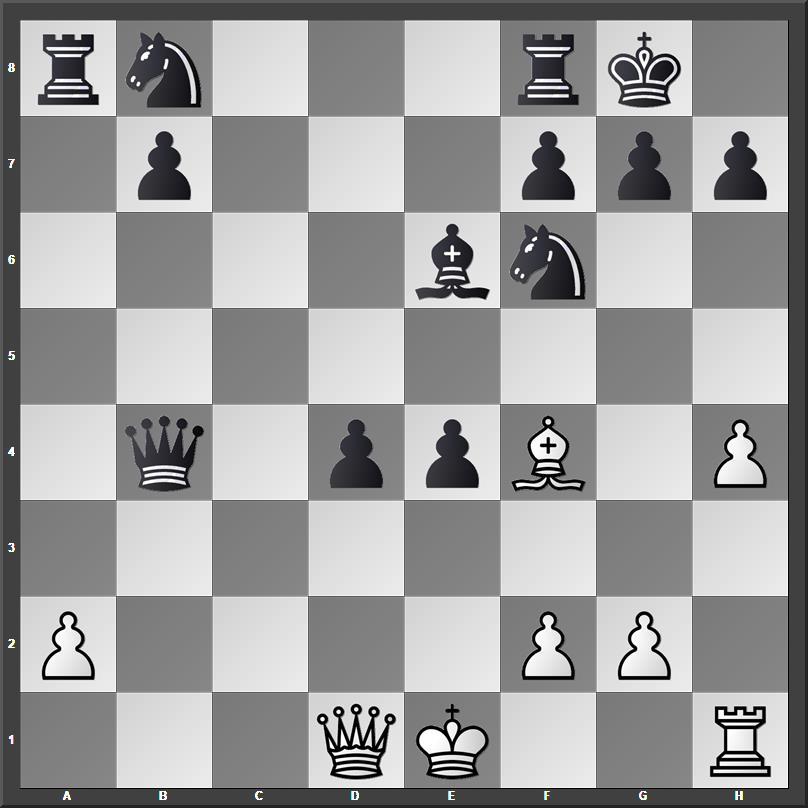 If 22.Bd2 Qb5 and Black is way ahead in material. 22.Kf1 Rxa2 23.Be5
If 22.Bd2 Qb5 and Black is way ahead in material. 22.Kf1 Rxa2 23.Be5 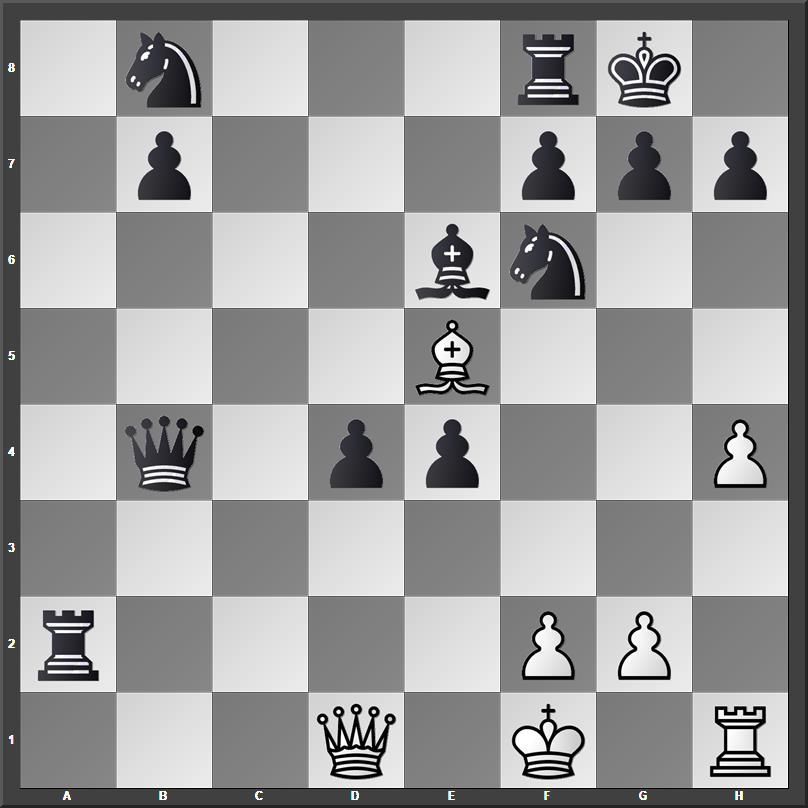 23Qd2 Interesting is 23...Bg4 but I chose to threaten mate.
23Qd2 Interesting is 23...Bg4 but I chose to threaten mate.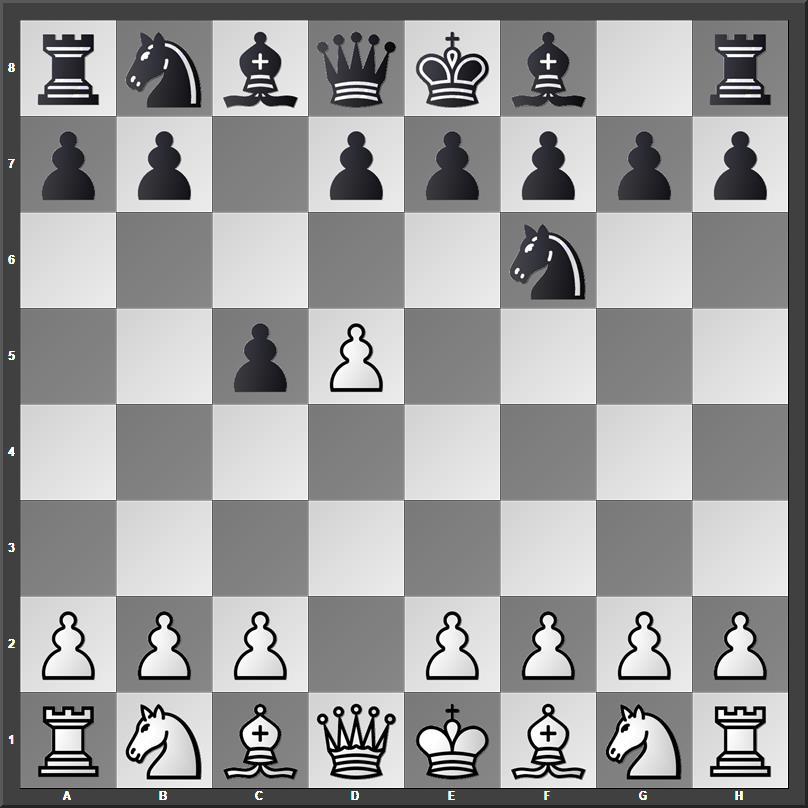 3.Be3 Black moved a knight and pawn. White uses a stutter step bishop to attack them both: first the pawn, then the knight. 3...d6 4.Bg5 Nbd7
3.Be3 Black moved a knight and pawn. White uses a stutter step bishop to attack them both: first the pawn, then the knight. 3...d6 4.Bg5 Nbd7 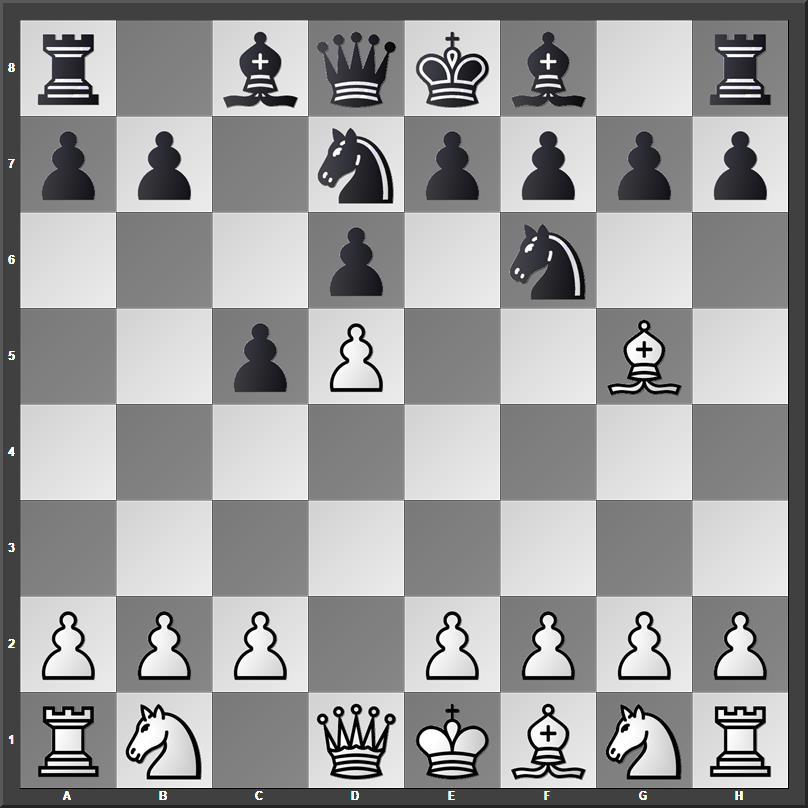 One interesting idea is 5.Nc3 b5 6.Nxb5 Qa5+ 7.Nc3 Ne4 with chances for both sides. 6.e3 a6 7.Qf3 g6 Black could attack b2 by 7...Qb6 with a better position. 8.h3 Bg7 9.g4 00 10.c3 b5 11.g5 Nd7 12.h4 Bb7 13.h5 e6 14.hxg6 fxg6 15.Qg4 Bxd5
One interesting idea is 5.Nc3 b5 6.Nxb5 Qa5+ 7.Nc3 Ne4 with chances for both sides. 6.e3 a6 7.Qf3 g6 Black could attack b2 by 7...Qb6 with a better position. 8.h3 Bg7 9.g4 00 10.c3 b5 11.g5 Nd7 12.h4 Bb7 13.h5 e6 14.hxg6 fxg6 15.Qg4 Bxd5 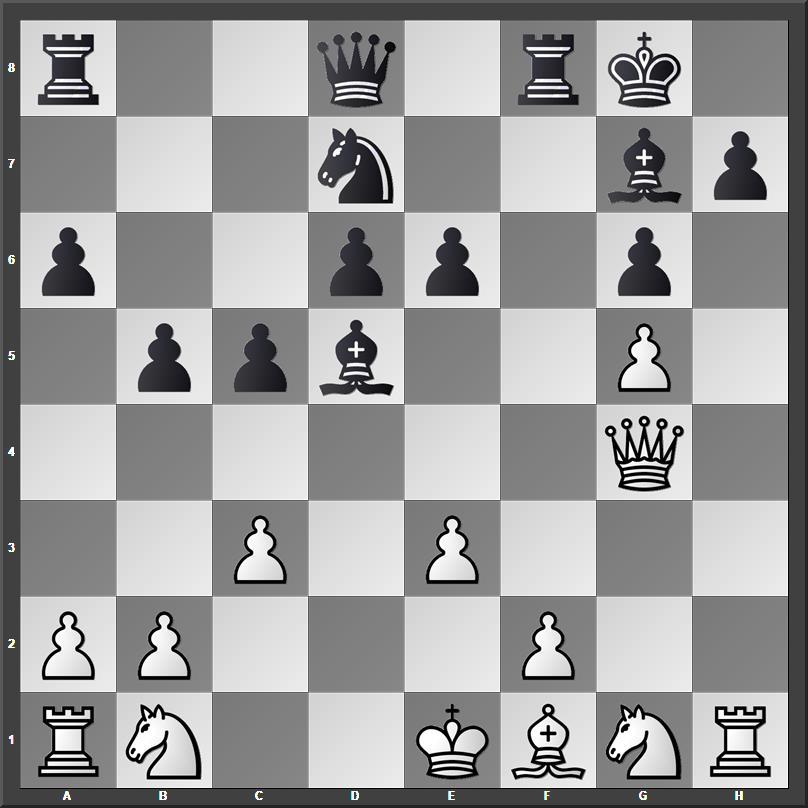 If 16.e4 Bc6 17.Nd2 Qe7 Black stands better. 8.h3 Bg7 9.g4 00 10.c3 b5 11.g5 Nd7 12.h4 Bb7 13.h5 e6 14.hxg6 fxg6 15.Qg4 Bxd5
If 16.e4 Bc6 17.Nd2 Qe7 Black stands better. 8.h3 Bg7 9.g4 00 10.c3 b5 11.g5 Nd7 12.h4 Bb7 13.h5 e6 14.hxg6 fxg6 15.Qg4 Bxd5 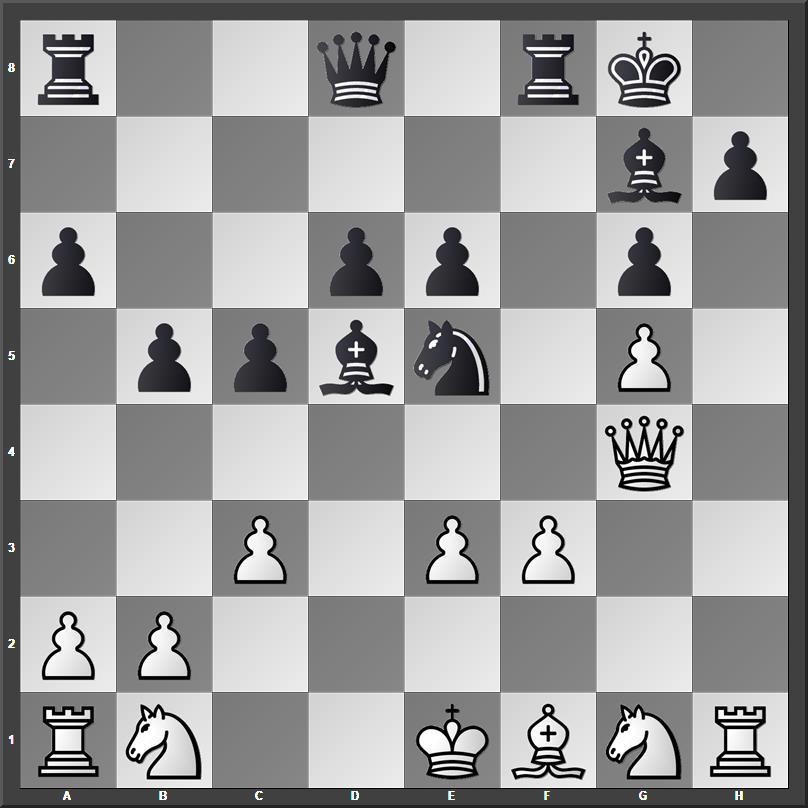 17.Qh4 Nxf3+ Better is 17...Rxf3 18.Qxh7+ Kf7 19.Nxf3 Nxf3+ winning. 18.Nxf3 Bxf3 19.Qxh7+ Kf7 20.Rh3 Be4 If 20...Bh5 21.Rxh5 Rh8 22.Qxh8 Bxh8 Black is winning. 21.Nd2 d5 My blunder here gives White a chance. Correct is 21...Rh8 22.Qxh8 Bxh8 23.Nxe4 Qc7 when Black stands better.
17.Qh4 Nxf3+ Better is 17...Rxf3 18.Qxh7+ Kf7 19.Nxf3 Nxf3+ winning. 18.Nxf3 Bxf3 19.Qxh7+ Kf7 20.Rh3 Be4 If 20...Bh5 21.Rxh5 Rh8 22.Qxh8 Bxh8 Black is winning. 21.Nd2 d5 My blunder here gives White a chance. Correct is 21...Rh8 22.Qxh8 Bxh8 23.Nxe4 Qc7 when Black stands better. 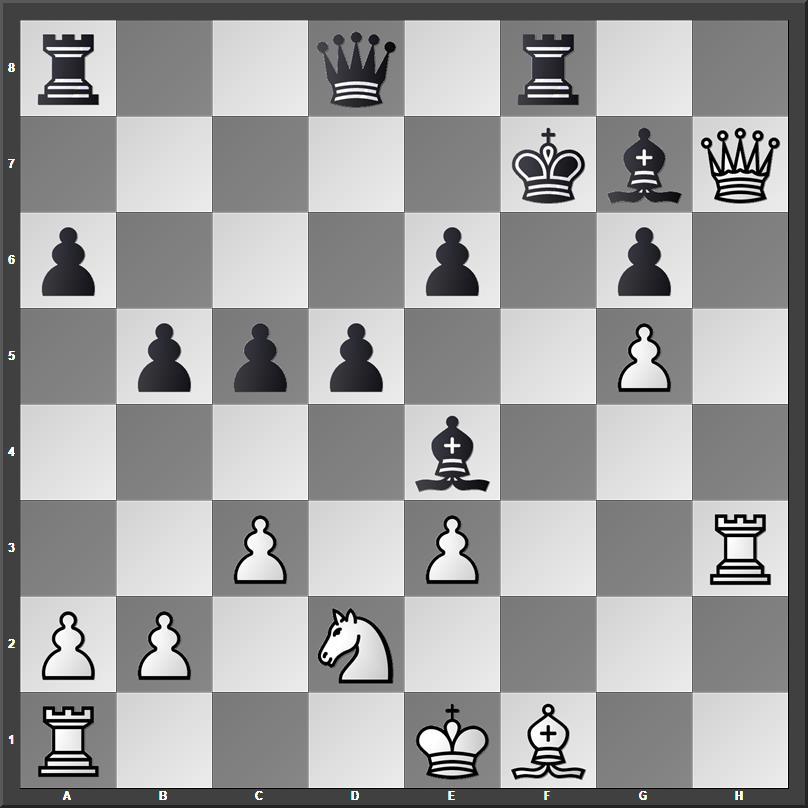 My opponent returns the favor with a blunder.
My opponent returns the favor with a blunder. 32.Nf3 Qxf3 33.Rd1 Qf2 34.Kb1 Qxb2# 01 White is checkmated
32.Nf3 Qxf3 33.Rd1 Qf2 34.Kb1 Qxb2# 01 White is checkmated